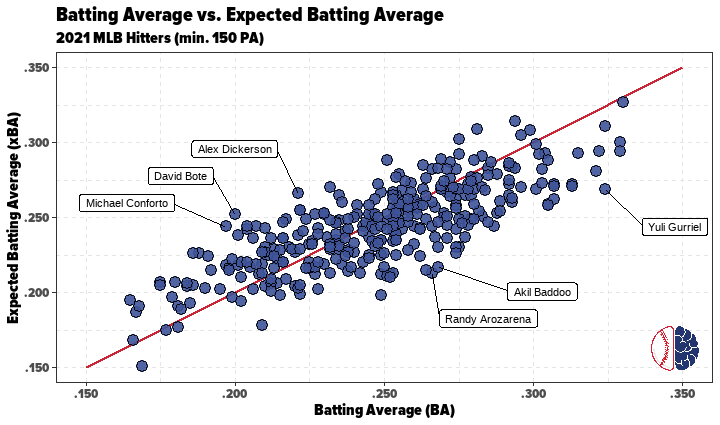
As baseball has evolved, so too have the metrics we use to evaluate performance. Gone are the days when batting averages and earned run average were the sole quantifiers of a player’s value. Today’s baseball analytics paint a much more comprehensive picture of player performances. One such modern metric is Expected Batting Average or xBA.
Understanding xBA
Expected Batting Average (xBA) is a relatively new statistic in the world of baseball analytics, part of a group of stats known as “expected statistics” or “Statcast metrics”. The xBA estimates what a player’s batting average should be based on several key factors.
How xBA is Calculated
xBA is calculated using the quality of a batter’s contact, rather than the result of the play. It’s based on a combination of exit velocity (how fast the ball leaves the bat) and launch angle (the trajectory of the ball as it leaves the bat). The idea is that a player’s batting average can often be influenced by luck — for instance, a well-hit ball might go straight to a fielder, while a poorly hit one might find a gap.
xBA looks at how often similarly hit balls have gone for hits in the past to estimate what a player’s batting average should be. For example, if a batter hits a line drive with a launch angle and exit velocity that usually results in a hit 75% of the time, this would count as 0.75 towards the player’s xBA.
The Significance of xBA

xBA is significant because it removes some of the variability and randomness inherent in baseball. It allows us to see beyond the traditional batting average, offering insight into whether a player is getting lucky with their hits or if they’re hitting the ball well but getting unlucky with the results.
For instance, if a player has a high batting average but a low xBA, it may indicate that the player has been getting lucky and their batting average may decrease in the future. Conversely, a player with a low batting average but a high xBA might be hitting the ball well but has been unfortunate with the outcomes.
Limitations of xBA
While xBA is a significant advancement in baseball analytics, it’s not without its limitations. First, it doesn’t account for a player’s speed. A faster runner has a better chance of turning a ground ball into a base hit than a slower one, but xBA doesn’t factor this into its calculations.
Secondly, xBA only takes into account balls that are put into play and doesn’t factor in a player’s plate discipline or ability to draw walks. A player’s overall offensive value can’t be fully captured by xBA alone.
The Future of xBA

Despite its limitations, xBA offers a fresh perspective on analyzing a player’s skill and luck in hitting the baseball. As the field of baseball analytics continues to grow, we can expect even more refined and precise metrics to emerge. Nonetheless, xBA serves as a key piece in the modern analytical toolkit, providing a clearer picture of performance and potential than traditional statistics alone.
In conclusion, xBA is an exciting development in baseball analytics, illustrating the game’s increasing reliance on detailed statistical data to evaluate player performance. While it isn’t the definitive measure of a player’s hitting ability, it certainly provides a more nuanced and comprehensive evaluation tool in the ongoing evolution of baseball statistics.



